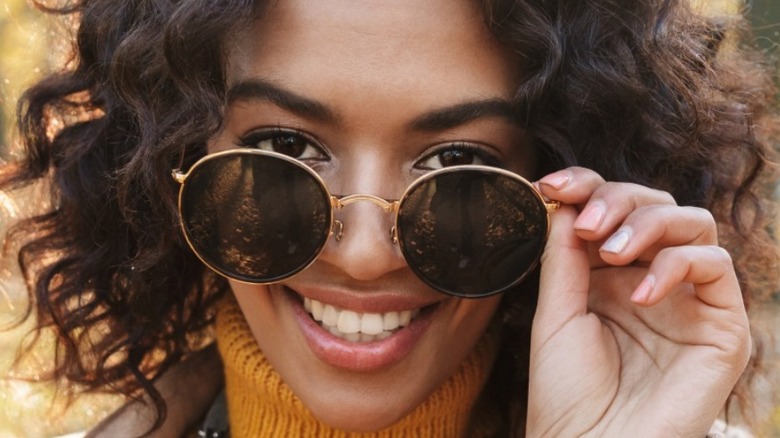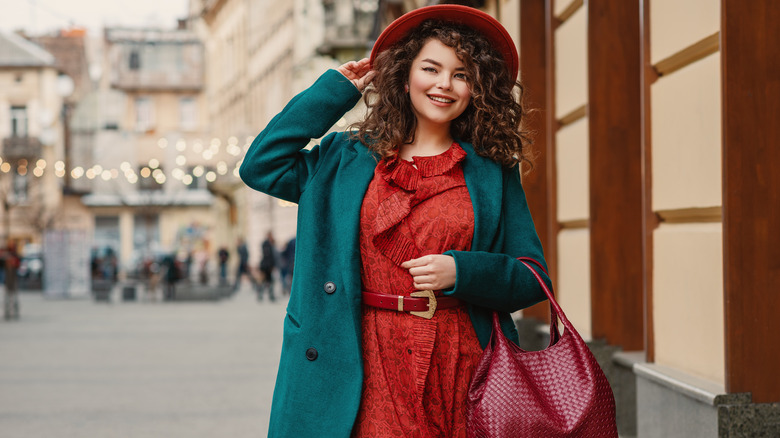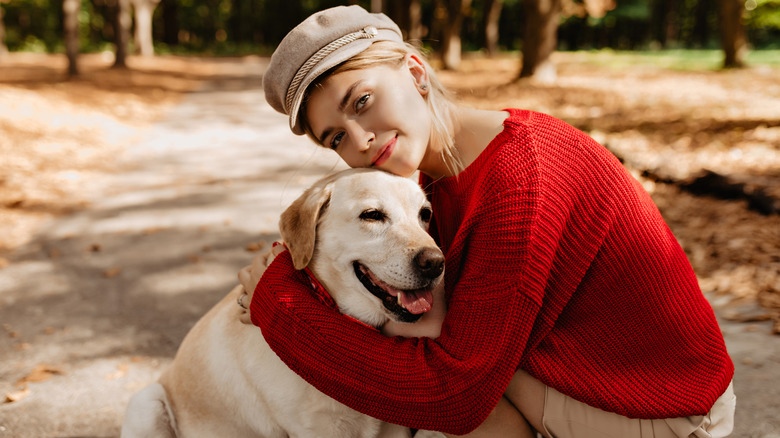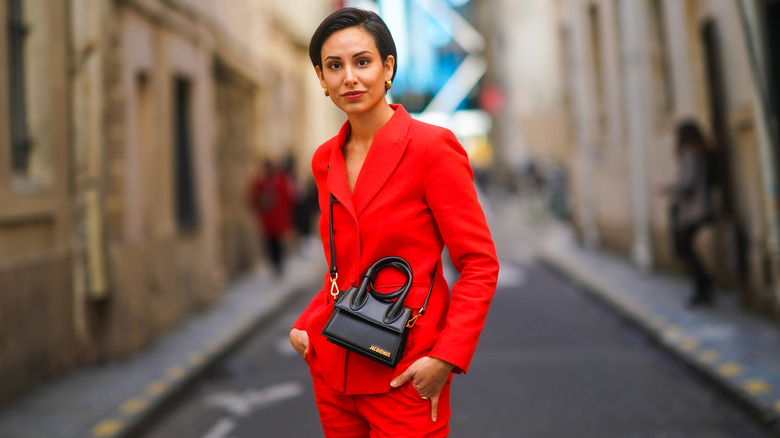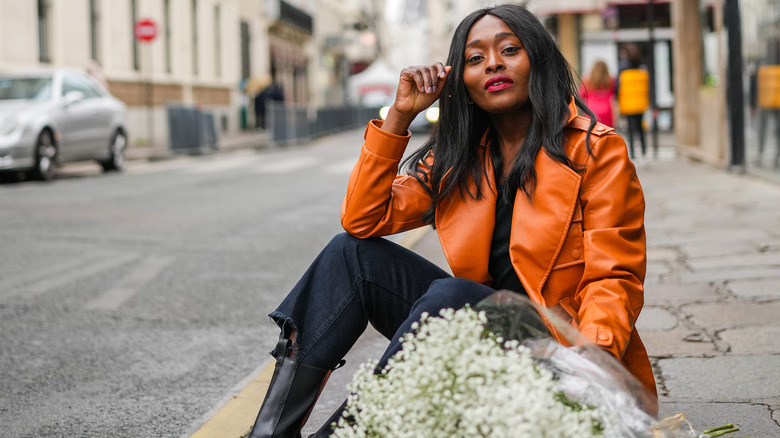The Best Colors To Wear If You're An Autumn Color Palette
We may receive a commission on purchases made from links.
Do you know what season you are? While seasonal skin-tone color analysis is not nearly so popular as it was in its 1980s heyday when Carole Jackson's mega-hit "Color Me Beautiful" first came out (via Amazon), it can still be a useful tool for determining the correct color palette for your skin tone, hair, and eye color. And as Truth is Beauty points out, seasonal color analysis is not just for Caucasians, nor does having dark hair, eyes, and/or skin automatically make you a winter or an autumn.
If you are an autumn, though, Color Me Pretty explains that you'll have warmer skin tones with yellowish as opposed to pinkish undertones. You may at first be disappointed to realize that the bright colors of spring, cool pastels of summer, or deep jewel tones and basic black and white of winter (via Carole Jackson Colors) aren't really the best colors to suit you. Once you come to understand the deep, rich autumn color palette, though, you may wonder why you ever wore anything else.
What is a true autumn?
As British clothing retailer Kettlewell explains, there isn't just one type of autumn. If you are a true, or a "leaf" autumn, both your own coloring (skin, hair, and eyes) may reflect the colors of the season itself — perhaps you have green or green-flecked hazel eyes like a moss-covered tree, or some reddish highlights in your hair like autumn leaves, or skin that tans to the shade of a golden aspen's leaves.
The colors you should wear should neither be too bright nor too pale. Rather than fire engine red, think rusty reds shading into chestnut brown. For greens, you should stick with medium olive or mossy shades. You can also wear blue, as long as you pick a greenish peacock, but you're one of the few that can pull off a mustard yellow and look good in the color. Instead of pure white, you'd do better to keep to a very light tan or sandy shade, and the darkest tones you should use in your wardrobe would be chocolate brown and dark olive.
Soft autumns are more summery
If you have lighter-colored eyes or perhaps some ashy tones in your hair, you might be what Kettlewell refers to as a soft autumn. It's also possible that true autumns could age into this hue as their hair lightens with age. Soft autumns may sometimes be mistaken for summers, but the giveaway that you're really an autumn instead is the fact that warmer tones suit you better than cooler ones.
If you're a soft autumn, you can go as light as an off-white shade of oyster, and for darker colors you could go with a gray or a deep eggplant. Expand upon your basic blues and greens to include teal and jade and sage, and you might even try a muted lime green. You can also add some pinks to your palette — rose and coral are suitable summer/fall crossover colors. Rather than mustard yellow like a true autumn, though, you should stick to a paler shade of gold for your yellow.
Deep autumns can wear darker colors
On the opposite end of the color spectrum from the soft autumn is the deep autumn, also sometimes known as the dark autumn or even the blue autumn. Just as soft autumns may be mistaken for summers, deep autumns have a number of characteristics (and colors) in common with winters, with darker hair and eyes that may provide a more high-contrast look to their paler, though still yellow-undertoned, skin.
Should you fall under the deep autumn color scheme, you should still avoid wearing black except for very formal occasions, but Kettlewell says you can go to a deep, dark brown. Deep, dark olive greens and eggplant are also shades that will look great on you. On the lighter side, you'd do best to stick with a soft white or very light gray, but don't be afraid to add a pop of color with a bright red or purple or a lovely teal blue.
Brighter colors suit vibrant autumns
If you are a vibrant or warm autumn, your coloring may be similar to that of a spring. While Color Me Pretty says autumns and springs both share warm skin undertones, autumns tend to have darker hair and eyes. If you fall somewhere in between, but have what Kettlewell describes as a "very light bright look," you may well be a vibrant autumn who can enjoy a wardrobe full of bright, warm-hued colors.
Instead of a mossy green, you'd look best in a bright grassy or leaf green, though jade's good too. You'll also look smashing in a hot tomato red, and golden browns and saffron shades were just made for you. Your darkest-colored garments should be a medium chocolate, but like the true autumn, you really shouldn't lean too heavily on any shades of white or off-white, as these may wash out your skin. You can, however, pull off some nice bold colors like orange or purple, as well as blues ranging from teal to aquamarine.
